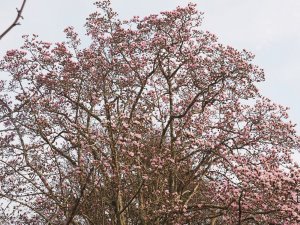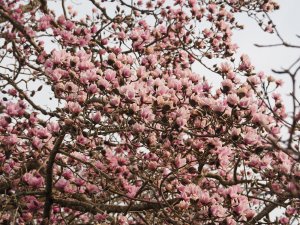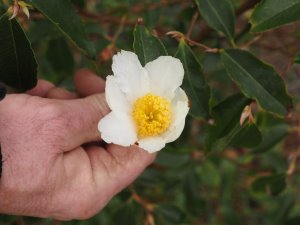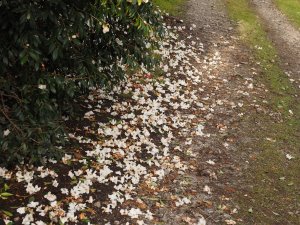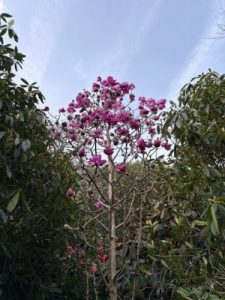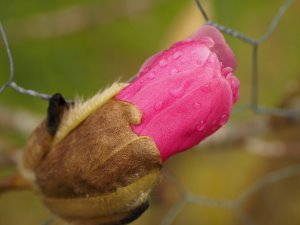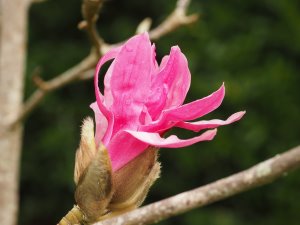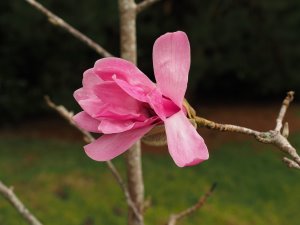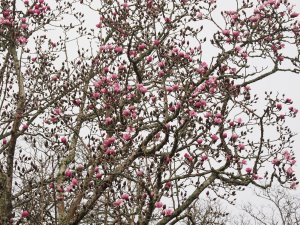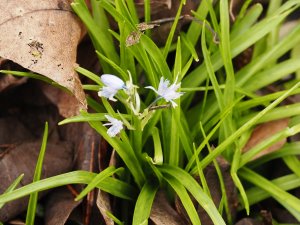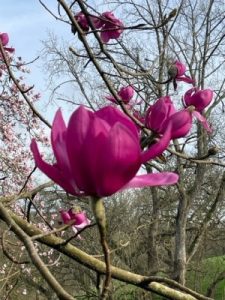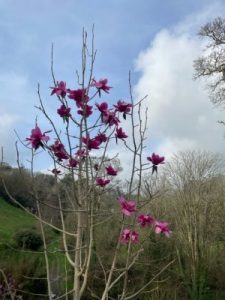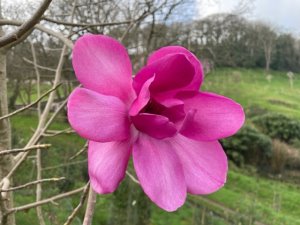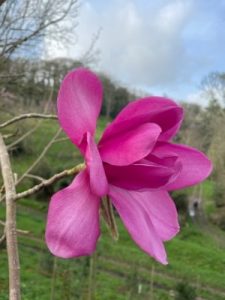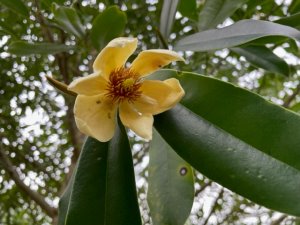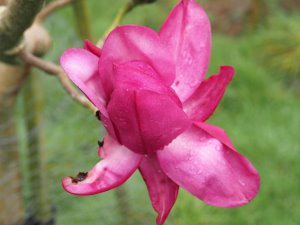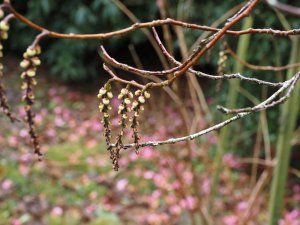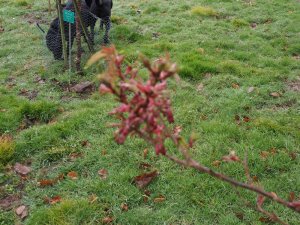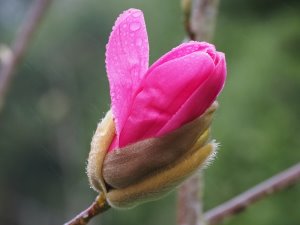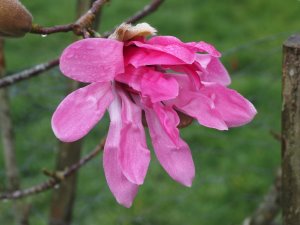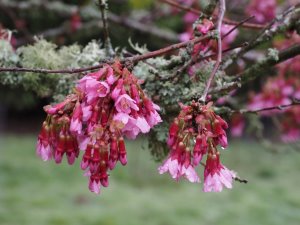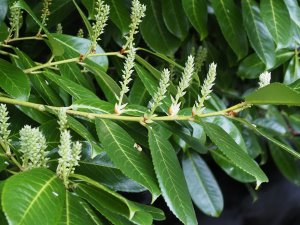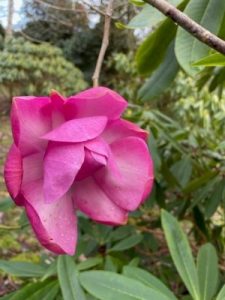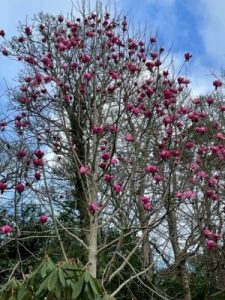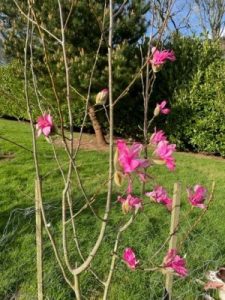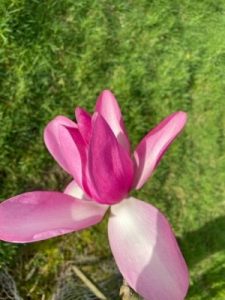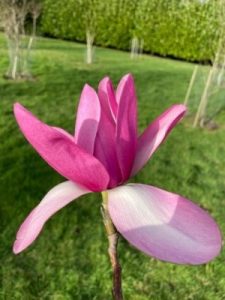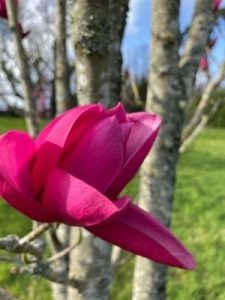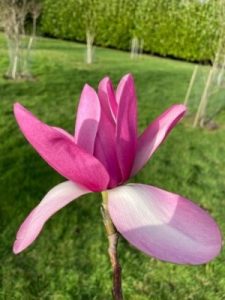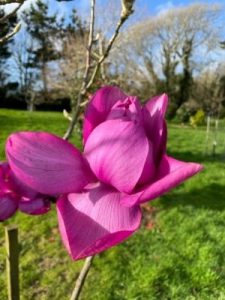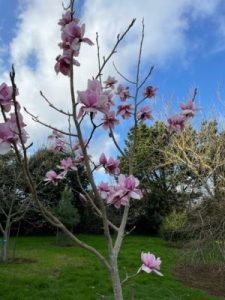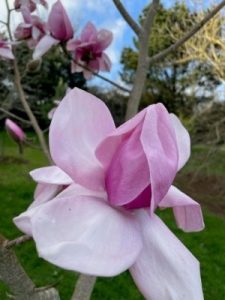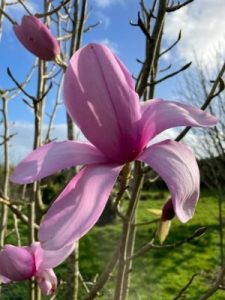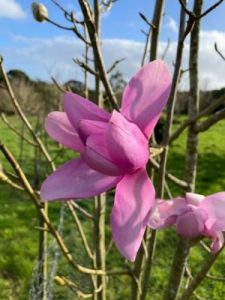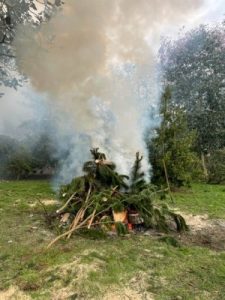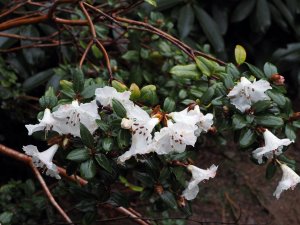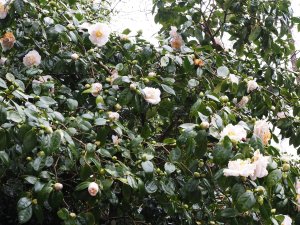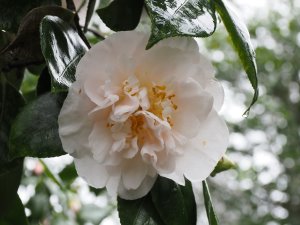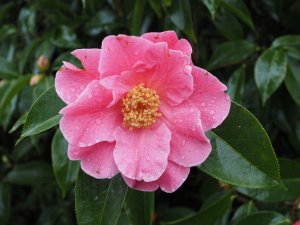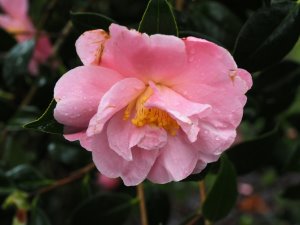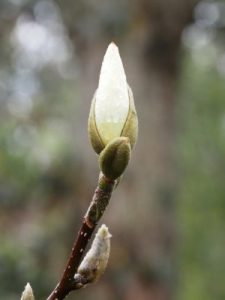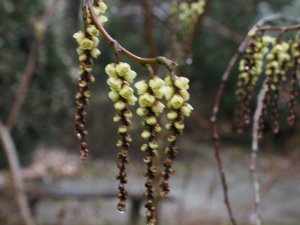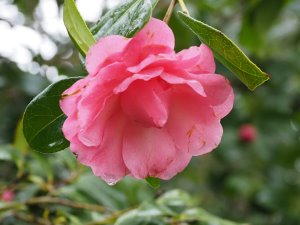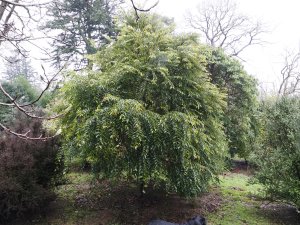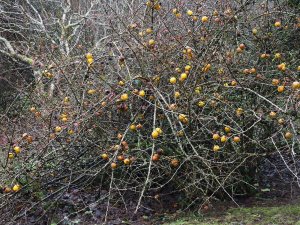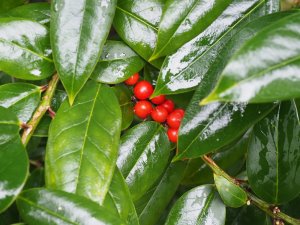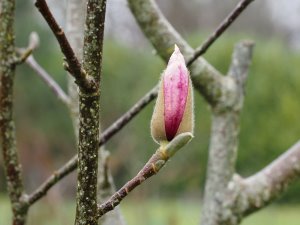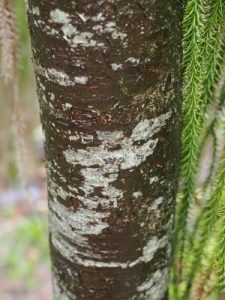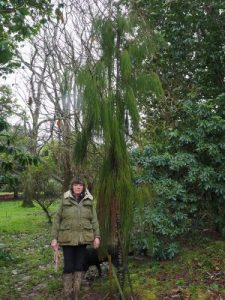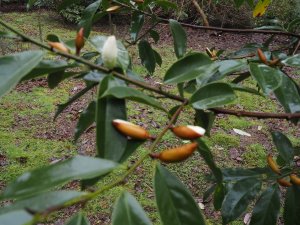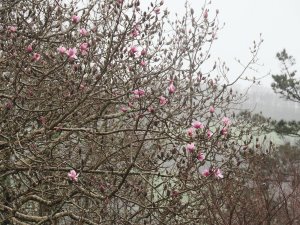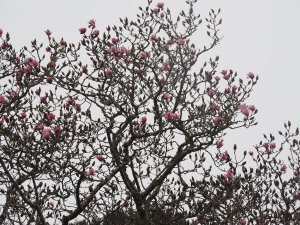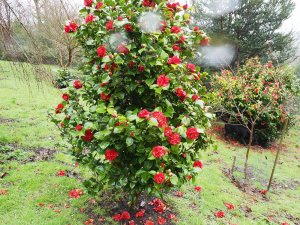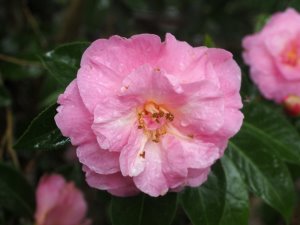2025 – CHW
Colour showing on a Magnolia in the Isla Rose.
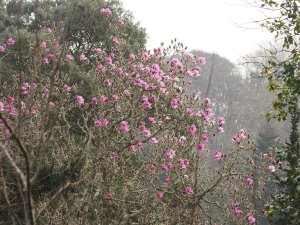
The magnolia campbellii above Crinodendron Hedge has blown out a bit prematurely and is a pale colour this year but impressive today none the less.
First flower on a young Camellia yunnanensis which we grew from seed.
Camellia ‘Cornish Snow’ more or less over.
The true Magnolia ‘Lanarth’ above Orchid House Nursery now at its best.
Suddenly Magnolia sprengeri ‘Dusty Pink’ is bursting out near Tin Garden. I think it is an even better colour than the M. sprengeri var diva ‘Fire’ which we saw a few days ago.
Today we also planted out Magnolia sprengeri var. sprengeri and Magnolia sprengeri ‘Pink Floyd’ which were, like ‘Dusty Pink’, collected on the Sino-Swedish expedition 2008-10 which discovered the full diversity of the different forms of M. sprengeri. Do they beat the original M. sprengeri var. diva ‘Diva’? Yes in terms of colour perhaps but no in terms of Diva’s unique flower shape and size on its cascading branches.
The not nearly so good sister seedling to Magnolia ‘Caerhays Belle’ outside the front gate is nearly out.
A rogue early flower on a Spanish bluebell half eaten by the pheasants.
2024 – CHW
Three new magnolias in Old Park today.Much excitement at the first flowering of another of Jaimie and Michael’s magnolia crosses. Last year it was frosted in bud. The cross was between Magnolia ‘Atlas’ (seed parent) and Magnolia campbellii subsp. mollicomata ‘Lanarth’ (pollen parent). The pollen was from a flower which I picked at Lanarth and brought back here. The cross was made in 2009 so we have only waited 15 years to see this one!
Three new magnolias in Old Park today.Much excitement at the first flowering of another of Jaimie and Michael’s magnolia crosses. Last year it was frosted in bud. The cross was between Magnolia ‘Atlas’ (seed parent) and Magnolia campbellii subsp. mollicomata ‘Lanarth’ (pollen parent). The pollen was from a flower which I picked at Lanarth and brought back here. The cross was made in 2009 so we have only waited 15 years to see this one!
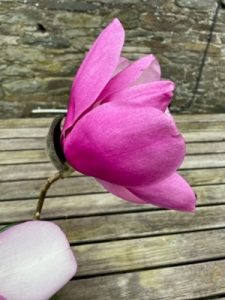
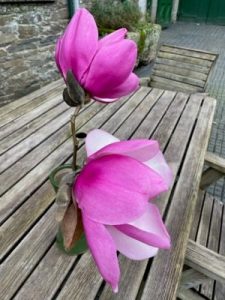
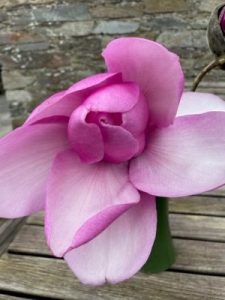
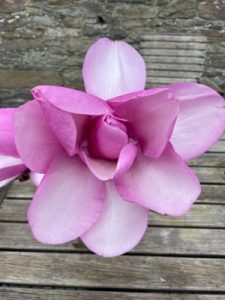
Again, for your enjoyment, a couple more pictures of the new Magnolia ‘Leonora’. (M. ‘F.J. Williams’ x M. campbellii subsp. mollicomata ‘Lanarth’).
Also more pictures of the equally new Magnolia ‘Coronation’ (M. sprengeri diva ‘Burncoose’ x M. campbellii var. mollicomata ‘Lanarth’).
Michelia martinii full out and covered in flower this year. It has only ever had a few flowers before and nothing last year.
Magnolia ‘Caerhays Belle’ now full out.
First flowers on a young Magnolia ‘Betty Jessel’ below White Styles.
2023 – CHW
A planting trip to Belvoir Castle looms so time to grab sight of this year’s magnolias while I can!
Magnolia ‘Lanarth’ (New Zealand Farm) just showing below Donkey Shoe.
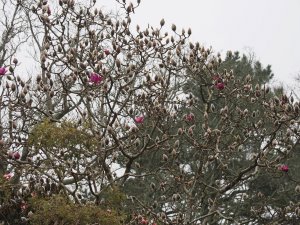
The pale Magnolia campbellii by Tin Garden now at its best and untouched by wind and frost.
Surprisingly the large flowered Camellia ‘Cornish Snow – Michael’ is still out and looking great today about 8 weeks after the first flowers featured in this diary.
Stachyurus lancifolius (BSWJ 5690) just showing colour all of a sudden.
Prunus campanulatus ‘Felix Jury’ nearly out in Tin Garden.
Magnolia sprengeri ‘Dusty Pink’ had nothing showing yesterday but today we see this. A remarkable colour for a sprengeri!
Prunus x incam ‘Okame’ has been threatening for a few days but now, finally, some colour.
Prunus laurocerasus with a multitude of flowers coming.
2022 – CHW
The magnolia season rushes on aided by the aftermath of the three storms.
Jaimie’s other new (unnamed as yet) magnolia hybrid (Magnolia ‘F J Williams’ x Magnolia campbellii) above the veitchii.
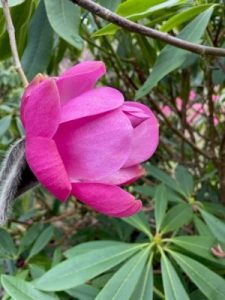
Magnolia sprengeri ‘Dusty Pink’ has fantastic scent. This is a superb new magnolia. A gift from Jim Gardiner and, I think, wild collected in China on a Swedish magnolia expedition.
Magnolia campbellii ‘Wakehurst’
Magnolia ‘Aurora’ – not as early as some years.
Magnolia ‘Elizabeth Holman’
Magnolia ‘Vairano’ gets better and better as others have said that it would.
Magnolia sargentiana ‘Blood Moon’ is also improving too with age.
The clear up of the fallen Pinus insignis branches on from Georges Hut. Many other Cornish gardens will be facing much worse. I hear the rearing field has much damage to brooder houses and nets from the gale.
2021 – CHW
After yet another bout of wind and rain the sodden garden is rushing on to spring. Several magnolias have blown open here and there.Rhododendron leucaspis now fully out.
After yet another bout of wind and rain the sodden garden is rushing on to spring. Several magnolias have blown open here and there.Rhododendron leucaspis now fully out.
Camellia ‘Mrs D W Davis’ now fully out despite some wind browning.
The New Zealand Magnolia ‘Lanarth’ just opening below Donkey Show.
A rather good Camellia reticulata seedling.
Camellia ‘Spring Frills’ (I think).
First buds showing colour on the pruned back Magnolia ‘Sweet Sixteen’.
Stachyurus lancifolia has sprung open earlier than usual. Now renamed Stachyurus praecox var. matsuzakii according to Hilliers who say it is tender and gets cut to the ground each winter. Not here for this Crûg wild collection plant which is now 10-12ft tall in as many years.
A red flowered sport on Camellia x williamsii ‘Galaxie’.
Carpinus kawakamii untouched by the east wind this time around. Still fully evergreen with us.
The quinces are finally rotting away.
Many of the red berries on Ilex kingiana have blown off in the wind.
Colour showing on Magnolia ‘Hot Lips’. The only magnolia in Kennel Close showing colour today. This one is not normally anywhere near being the first in this area.
Interesting bark on the trunk now of Dacrydium cupressinum. Again this tender conifer untouched by the Beast – about 15ft tall now.
Colours showing on Michelia ‘Fairy White’.
The huge Magnolia campbellii seedling above Crinodendron Hedge is bursting out in the wind and is now way ahead of the main tree. I checked this only two days ago and nothing showing.
Camellia ‘Dr Burnside’ full out. I do not see much difference between this and ‘Miss Charleston’ although the latter flowers later in the season.
Camellia ‘Faith’ with rather variable shaped flowers; some more semi-double than others. A 40 year old plant and one of the first camellia groups that I planted beside and below Donkey Shoe. One for Asia to add to the nursery cuttings list.




